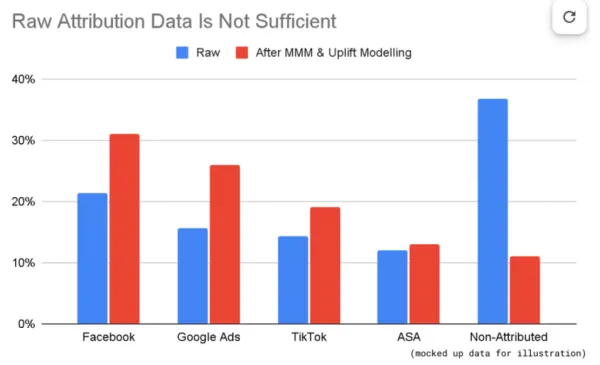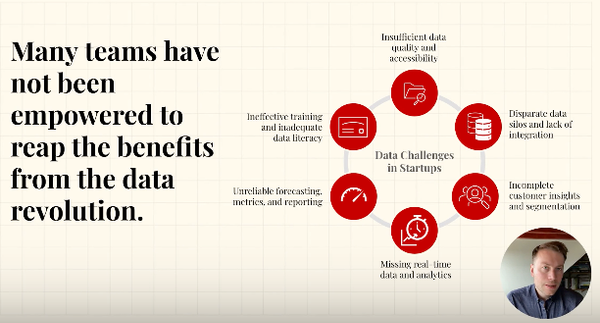analysis
Fixes for Mobile Attribution in 2024

Data Privacy is a great evolution but mobile marketing teams have had to adapt quite heavily! We have developed ways to keep analytics relevant for mobile apps, even in this new environment. And we’d love to share what we did.
The project we ran for Paired is a great illustration of how a centralised data stack and a sophisticated attribution model can really boost your marketing performance.
Paired is a popular mobile subscription app designed to enhance relationship satisfaction. The app offers content created by leading academics and therapists to help couples strengthen their bonds. Paired has been featured in major publications like BBC News and The Times and was named Apple App of the Day in January 2024. Their business model relies on providing valuable, scientifically-backed content to subscribers, making effective marketing and accurate data analysis crucial for their success.
Challenge #1: Lack of Centralised Truth
Paired’s marketing team, like many others, faced the challenge of fragmented data sources. Operating across various marketing channels made it difficult to get a complete view of marketing performance. This led to time-consuming manual data extraction from multiple spreadsheets, hindering timely decision-making.
Spreadsheets are not a nice way to make decisions at scale.

To tackle this issue, we focused on three key goals. First, we wanted to make sure that the team was able to prototype rapid analysis. This step was crucial for understanding the data sources and the business logic embedded in their processes.
Second, we centralised all marketing and attribution data into a single data warehouse using Snowflake. This involved using dbt for data modelling, which helped us create reliable data models and ensure everyone had consistent information. We also built Looker dashboards to let the marketing team track key metrics like cost per install (CPI) and return on ad spend (ROAS) easily.
Finally, by centralising data, we enabled in-depth analysis of user acquisition across different devices and platforms. This is highly important for Paired as they have web-to-app, app-to-web, and in-app onboarding flows that all need to be taken into account. This included examining the impact of CRM in the subscription analytics strategy. This holistic approach brought several benefits, such as more time for analysis and less for data gathering, fast and reliable data for better decisions, and a self-serve platform for detailed insights.

Challenge #2: iOS Privacy Limits
The iOS 14 privacy changes — mainly the App Tracking Transparency (ATT) framework — created significant challenges for app marketers. With reduced access to user data like IDFA, it became harder to target campaigns effectively, measure success accurately, and understand user behaviour across different platforms and devices.
You can see the impact on mobile gaming spend immediately (Eric Seufert calls this the ATT Recession — great summary).

The key insight here is that you do not necessarily need individual level data to understand the performance of your cohorts or segments. You just need a reliable assessment of aggregate performance in each group you want to measure.
We employed several strategies to get better at this performance assesment. We first analysed the average weekly ATT opt-in rates by channel, campaign, and country. This is critical — ATT opt-in rates vary significantly (sometimes as high as 80%, sometimes as low as 10%!). This allowed us to apply these rates to the revenue attributed to channels, avoiding double counting. We also redistributed organic and unattributed revenue into paid channels based on SKAdNetwork installs, ensuring more accurate revenue attribution.
These strategies led to significant improvements. There was no double counting of revenue per channel, better allocation of revenue to channels and campaigns, and improved campaign optimisation and business decisions.
And as you can see here, attributed revenue shifts significantly when extrapolating unattributed revenue to its proper channels!

Challenge #3: Explaining Challenging Performance
In the summer of 2023, Paired underwent a decline in marketing performance that limited their ability to spend at the same levels as before. Understanding why performance was decreasing was a highly complex task. It required various analytical methods to identify the contributing factors — and would not have been possible at all without us having built the centralised platform + attribution models. As a matter of fact, we had already offboarded them when the Paired CMO reached out again for help with analysis.

And so we helped! We focused on a few key areas.
We performed decay analysis to see how long content stayed effective and its impact on user engagement. After that, we also examined the stages of the user acquisition funnel to spot any issues, finding that the volume at the top of the funnel was the key factor.
Additionally, we used media mix modelling (MMM) and Bayesian regression to understand how new channels like TikTok affected growth. We set a baseline, considering seasonality, to measure the extra installs from influencer marketing.
This analysis provided clear actions. We established a new content production flow and increased creative testing. We also became more confident in spending on TikTok and other new channels, identified macro influencers as a strong platform, and met performance goals with a better understanding of channel impacts.
With success as you can see here 🙂

Conclusion
Look – mobile analytics has gotten difficult for marketers who need the ability to see quasi-realtime performance. And our work with Paired shows that you can still do that in the new landscape, if you have a strong data setup and can adopt to privacy changes. By centralising data, using advanced analytics, and understanding user acquisition, the team was able to not just get visibility on ongoing campaigns but also identity where to grow further. These strategies are crucial for marketers dealing with digital privacy challenges.
And so for performance marketers, the key points are to invest in a centralised data platform early, use advanced models to handle privacy measures, and focus on actionable analysis to improve marketing performance.
Don’t hesitate to reach out to us if you want some quick feedback on what is possible here!

